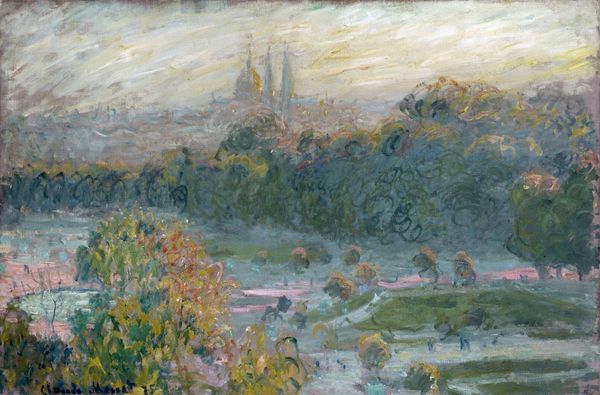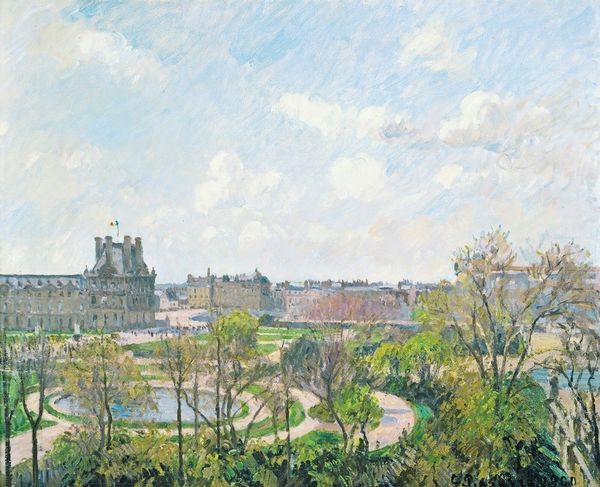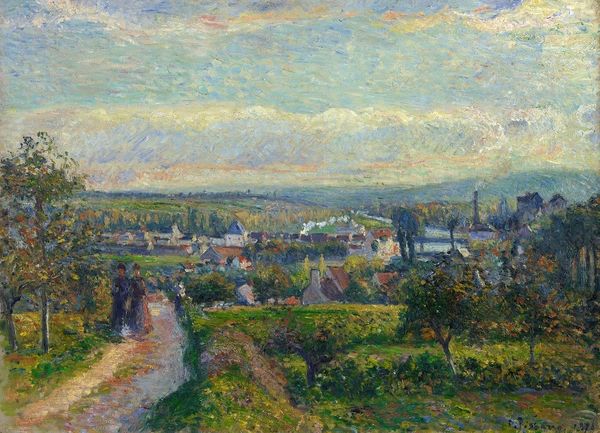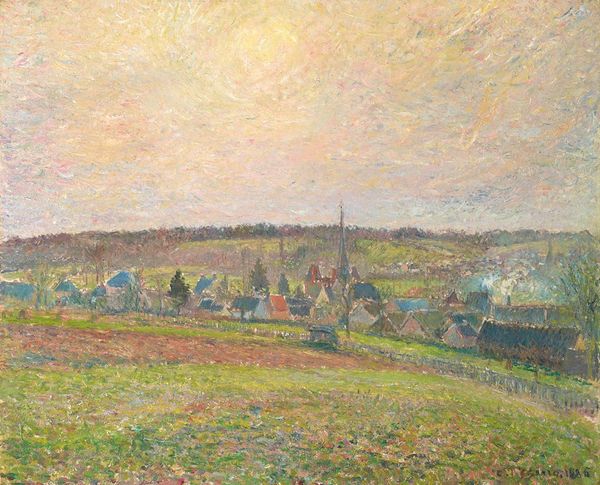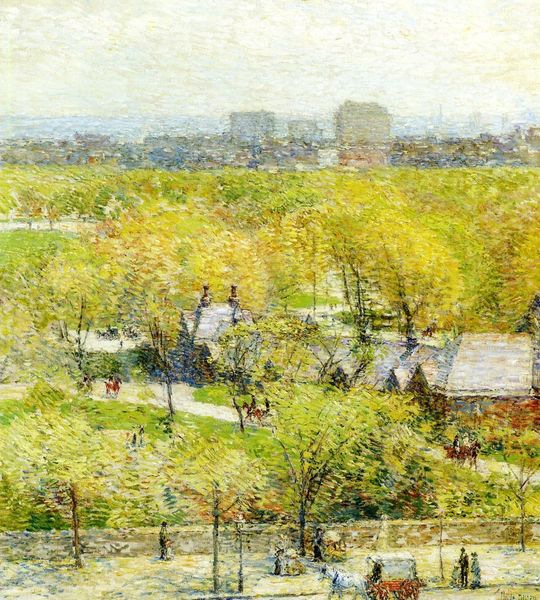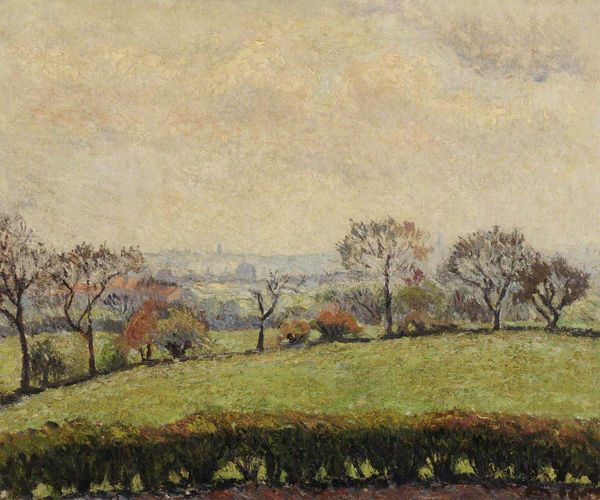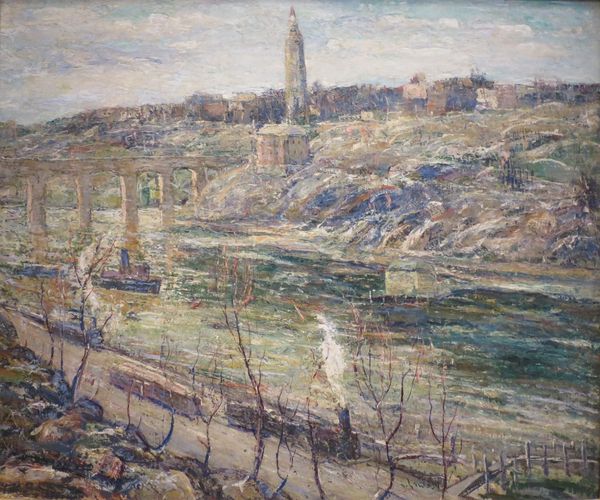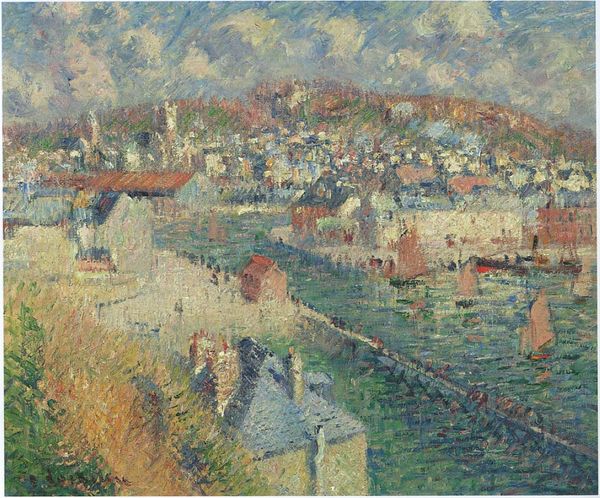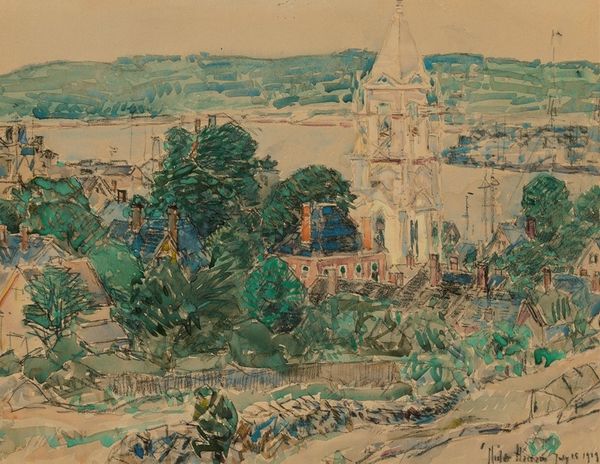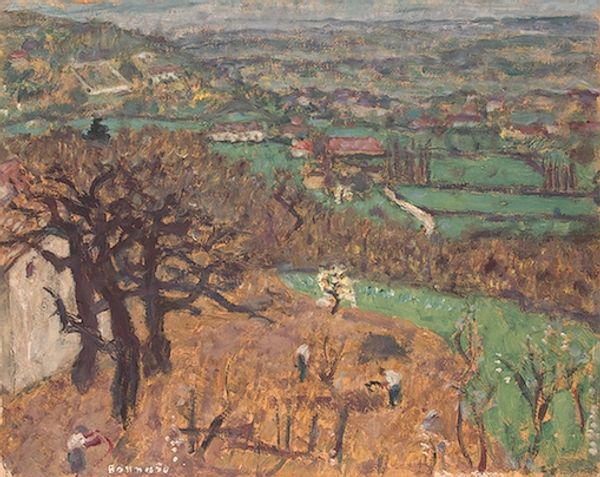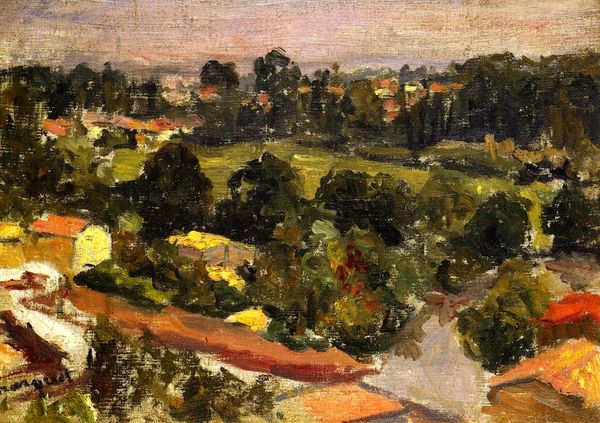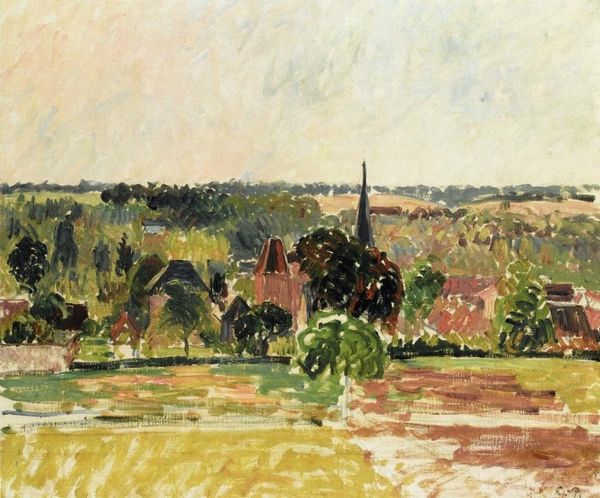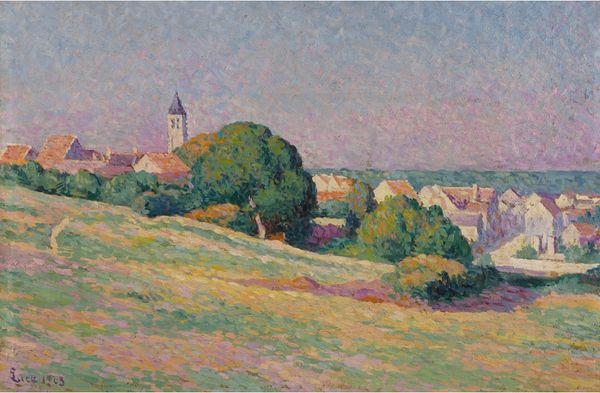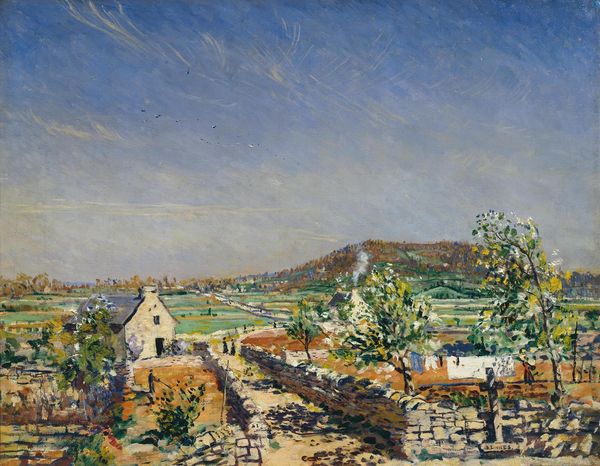
Copyright: Public domain
Curator: Childe Hassam painted this shimmering view, titled "Gloucester Harbor," in 1918. Editor: It has a strangely hopeful feel, doesn't it? All these dabs of bright greens and yellows reaching up toward those tranquil blues of the harbor. It almost hides the houses nestled there. Curator: Gloucester was a common subject for Hassam. We often think of Impressionism as capturing fleeting moments, but consider the enduring symbolism of the harbor itself. As a port town, it signifies entry, departure, and exchange—economic, social, and cultural. Editor: The church steeple prominently featured reinforces that idea, a long-standing visual motif symbolizing the established order. The boats hint at an idealized, yet quaint American prosperity, despite this being painted during wartime. It makes you wonder what 'returning home' would feel like, then. Curator: And Gloucester’s role within the larger artistic ecosystem can’t be ignored either. As a long-established art colony, its repeated depiction created its own market value for paintings such as these. The artistic value becomes intertwined with the very image it portrays. Editor: So it becomes self-referential almost. Look at the sailboats; even rendered so fleetingly, those billowing white sails suggest purity and perhaps a reaching towards new beginnings in that traditional symbology. Curator: Precisely! It shows the layered messages imagery can communicate to contemporary audiences versus future audiences, if read correctly. Editor: It's interesting how what might look like just a charming Impressionistic scene opens up into a study of social and artistic currents, then. The symbolism reveals even more hidden stories.
Comments
No comments
Be the first to comment and join the conversation on the ultimate creative platform.
